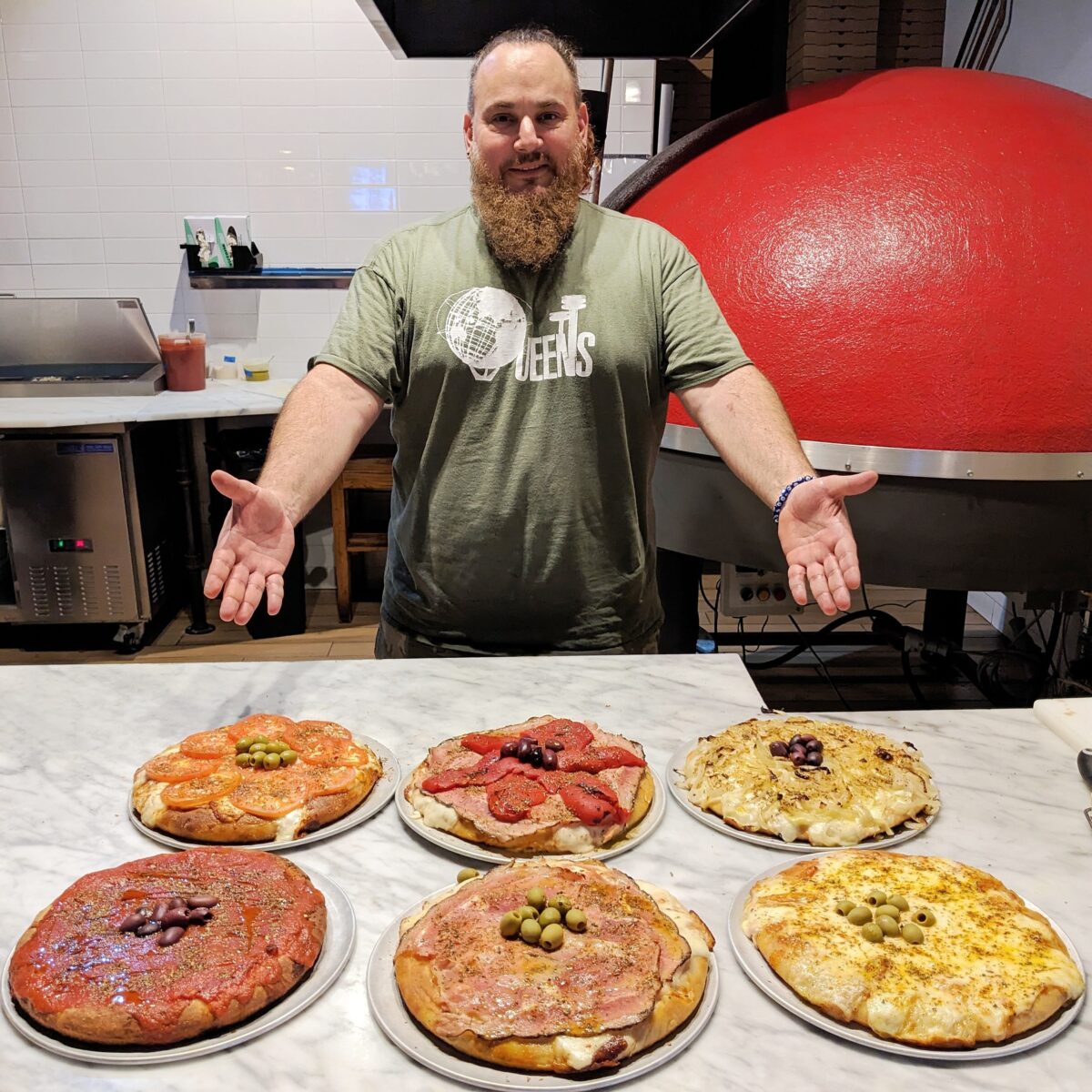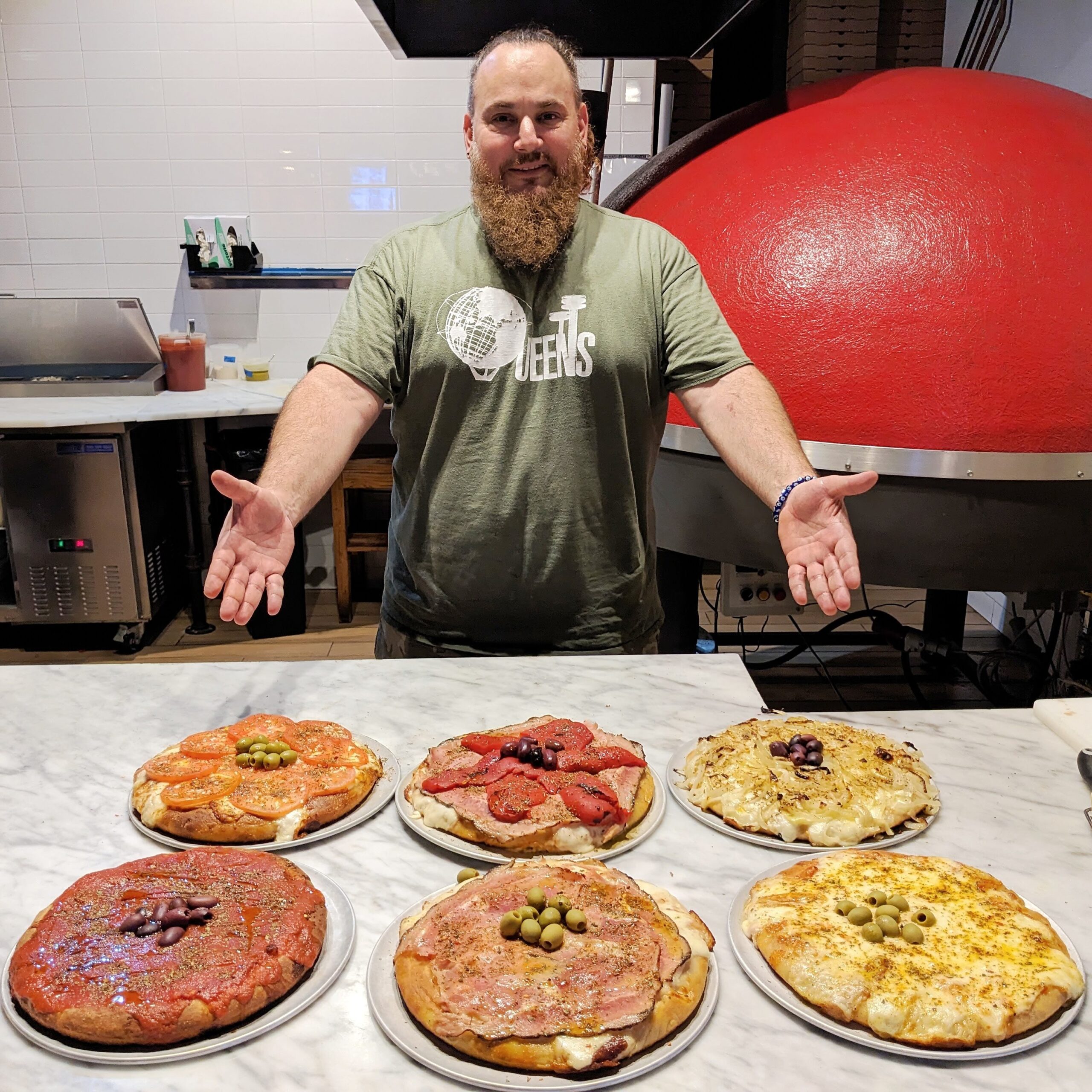Uniting Generations Through Memorials Around Forest Hills
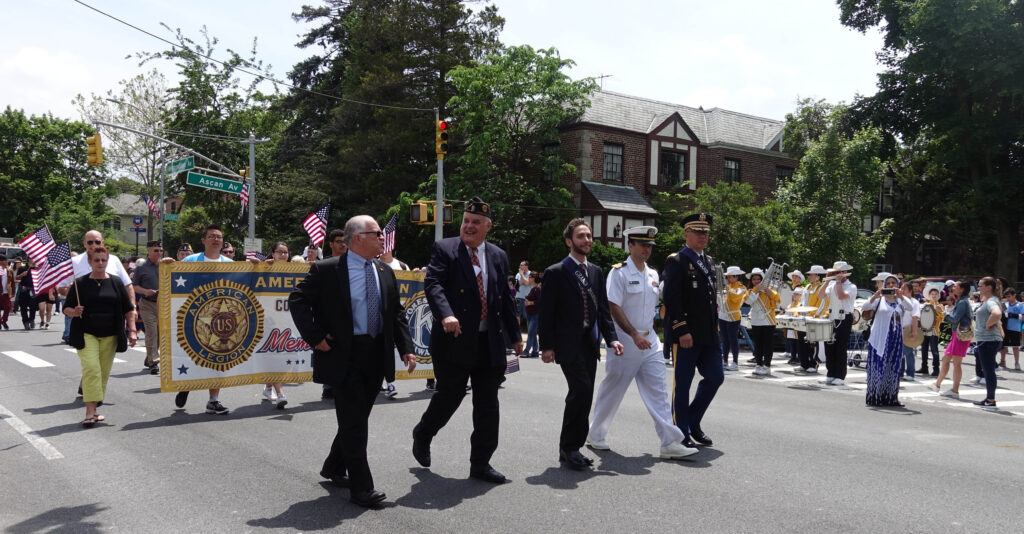
By Michael Perlman | mperlman@queensledger.com
Throughout Forest Hills, a number of monuments, parks, buildings, and parade routes keep the memory of America’s bravest alive. May we never cease to honor those who dedicated their soul to our country.
On Flagpole Green, formerly Village Green in Forest Hills Gardens, stands an ornate Neo-Classical pink granite and green and gold bronze monument, which honors 102 residents and was dedicated in 1920. The WWI Soldiers & Sailors Memorial was designed by renowned American sculptor Adolph Alexander Weinman (1870 – 1952), who lived nearby at 236 Greenway South and operated a studio at 234 Greenway South.
The memorial reads, “Erected by the citizens of Forest Hills in recognition of the patriotic spirit and loyal devotion of the men of this community who served in the Military Forces of The United States in The Great War.” The design represents “The Call to Overseas” above the names on the tablet, including Dr. Joseph MacDonald, Gerald MacDonald, Henry MacDonald, George C. Meyer who served as president of Cord Meyer, and David and Howard Springsteen of the community’s farming family, when Forest Hills was known as Whitepot. Since last summer, residents observed meticulous restoration work, resulting in the polishing of the bronze tablet, which developed a green patina, as far back as most residents can recall.
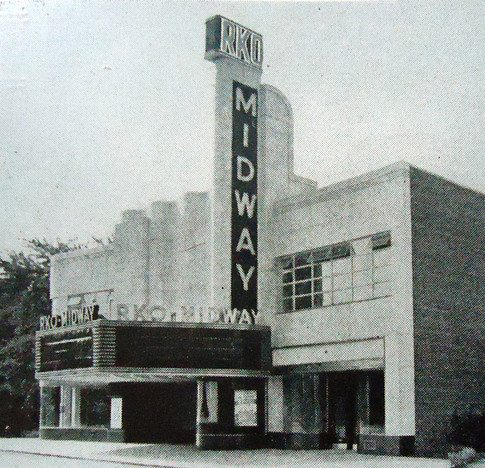
Midway Theatre Upon Completion in 1942.
The historic Art Moderne style Midway Theatre at 108-22 Queens Boulevard, with its accordion-like façade and vertical beacon, was designed in 1942 by America’s foremost theater architect, Thomas Lamb. Upon making an entrance, theatergoers once took pride in an illuminated Battle of Midway mural. When community residents picked up a copy of The Forest Hills-Kew Gardens Post on September 18, 1942, they came across an ad, which read, “The Midway Theatre has been so named and dedicated as a tribute to the gallant men of our armed forces, who achieved so brilliant a victory at Midway Island.” Patrons were ready for a single-screen theater, where they could enjoy films and attempt to escape the traumas of WWII.
Enter the small forested setting of Samuel Picker Square at 69th Avenue and Burns Street near Forest Hills Stadium and Chatwick Gardens. Situated alongside the fence in an often overlooked spot is a stone bearing an inscription: “This Sitting Area is Dedicated to the Memory of Samuel Picker; Outstanding American, Community Leader and Dedicated Legionnaire; 1921 – 1981; Forest Hills Post 630, The American Legion.” It then bears the names of past officials, Borough President Donald R. Manes and Councilman Arthur J. Katzman.
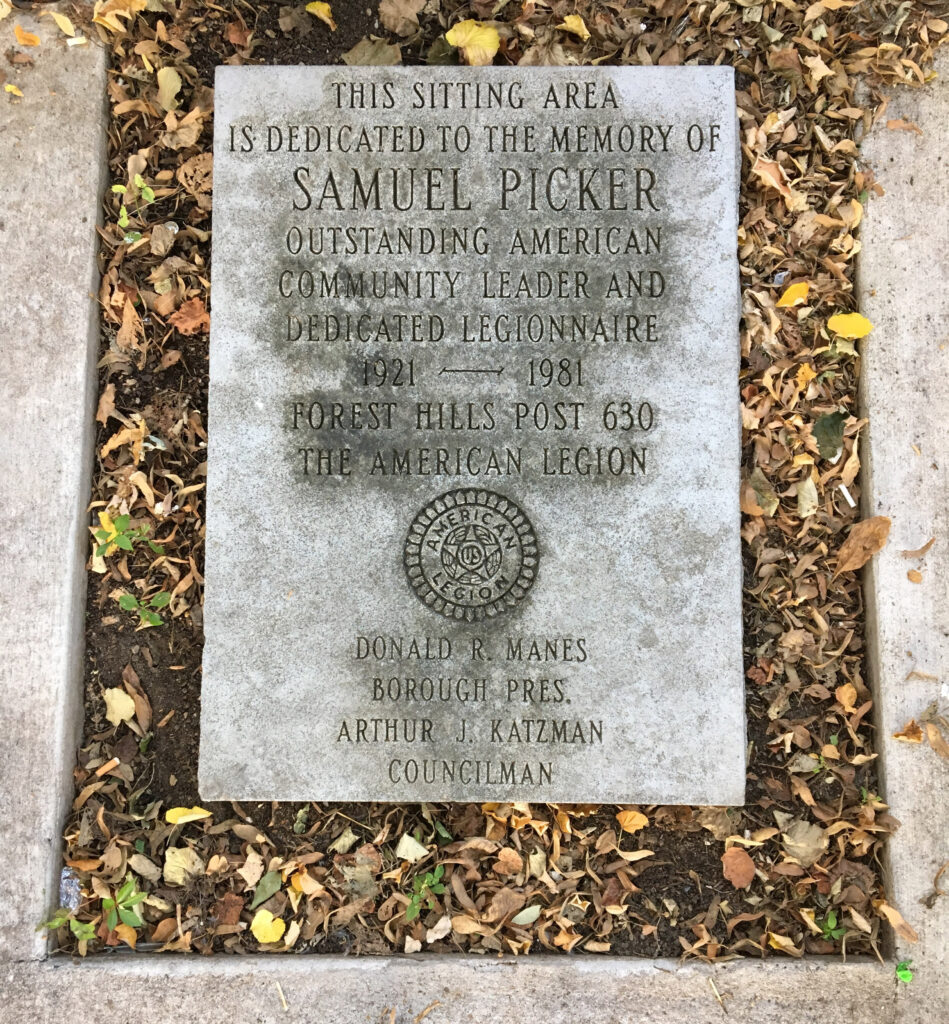
Samuel Picker Square stone dedication. Photo by Michael Perlman
Samuel J. Picker, a Renaissance man, wore several hats, mostly throughout the 1960s and 1970s, consistently fulfilling his humanitarian spirit. They included Queens County American Legion Commander, Governor of District 20-K Lions International, Queens Cancer Crusade committee member, and President of the National American Legion Press Association. He served as Grand Marshal of the American Legion County Parade in Ridgewood in June 1971, which began with exercises at the War Memorial on Myrtle Avenue and surpassed expectations with 15,000 guests. He also served as president of the Guide Dog Foundation for the Blind, which offered philanthropic gift guide dogs and rehab to qualified blind applicants, where masters and guide dogs were duly trained at the Foundation’s center in Smithtown.
Picker owned the longtime Continental Hardware at 102-01 Metropolitan Avenue. As of 1976, he was a Queens County Grand Jurors Association member, and in 1977, he became founder and first president of the Forest Hills Chamber of Commerce. In 1978, Lieutenant Governor-Elect Mario Cuomo presented him with the Henry G. Wenzel Medal of the American Cancer Society at the Biltmore Hotel dinner dance.
The tour continues with Forest Hills’ earliest extant tributary site, Remsen Cemetery, which was landmarked in 1981. Situated on a park-like setting between Trotting Course Lane and Alderton Street, the cemetery contains tombstones dating from 1790 through 1819. Flanking a flagpole, two doughboys honor Forest Hills’ service in WWI.
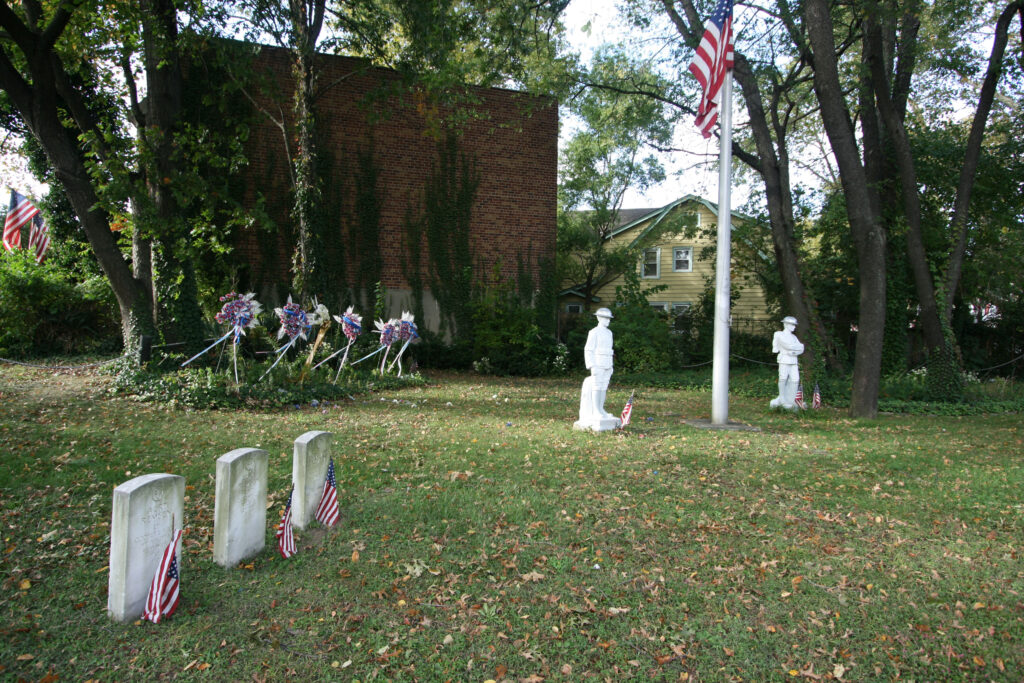
Later addition of limestone tombstones at Remsen Cemetery with doughboys. Photo: Michael Perlman
In Colonial times, it was popular for families to have private cemeteries close to home. The Remsen family erected a homestead on their farm adjacent to the cemetery in 1699, which stood until 1925. Jeromus Remsen Sr. (1735 – 1790) fought in the French and Indian War. As colonel of the Kings and Queens County Militia in the Battle of Long Island, he commanded the 7th New York Regiment in the American Revolutionary War.
The Remsen Park Coalition’s 1981 plaque states, “Within this park lies the remains of Revolutionary War Veteran Colonel Jeromus Remsen. Buried in the confines of this site were his cousins Major Abraham Remsen, Captain Luke Remsen, Lieutenant Aurt Remsen and their families. The Remsen family was amongst the first settlers of this area, originally known as White Pot.” A 1925 survey revealed brownstone grave inscriptions of Jeromus, Anna, Jerome (two), Cornelius, Ann Elizabeth, Bridget, and Major Abraham Remsen. The Veterans Administration erected non-brownstone graves that memorialize Colonel Remsen, Maj. Abraham Remsen, and brothers Aurt and Garrett Remsen, who were also Revolutionary War officers. The vanishing of some brownstone tombstones remains a mystery.

Remsen Farmhouse. Courtesy of Michael Perlman
The Captain Gerald MacDonald Statue stands prominently in MacDonald Park as a bronze sculpture bearing homage to Gerald MacDonald (1882 – 1929), a Forest Hills resident and WWI veteran. He was an officer of engineers, who erected bridges and dug trenches. It was dedicated on May 27, 1934 by Mayor Fiorello H. La Guardia, after American Legion Post 630 allocated $1,500 at the request of WWI veteran Henry MacDonald, Gerald’s brother. The granite base inscription reads: “Capt. Gerald MacDonald; Memorial Dedicated By Forest Hills Post No. 630 The American Legion; To Those Who Served In The World War; 1934.”
The statue was sculpted by Henry MacDonald’s brother-in-law, Frederic de Henwood, and designed by architect William Henry Deacy. As for MacDonald Park, it was officially named on April 25, 1933.
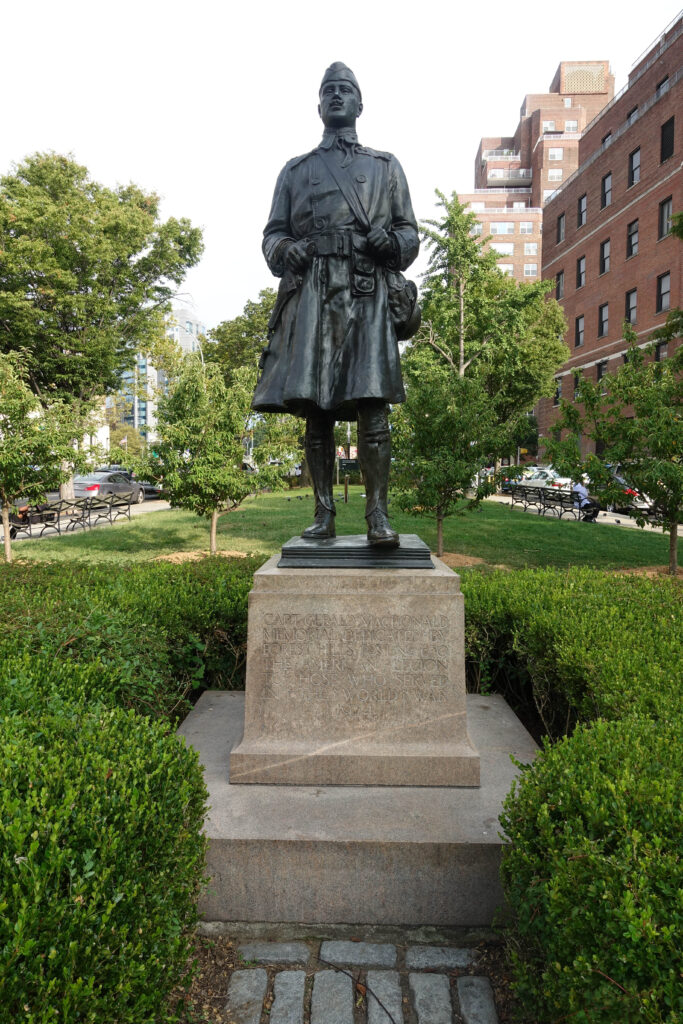
WWI Captain Gerald MacDonald Statue. Photo by Michael Perlman
On May 28, 1933, the New York Times reported, “The ceremonies included a parade through Forest Hills by American Legion posts, Boy and Girl Scouts, and civic groups. Colonel F.W. Stopford of the U.S. Army, who was the principal speaker at the ceremonies, praised Mr. MacDonald’s war service as an officer of engineers at the battle of the Meuse-Argonne.” A rare MacDonald Memorial Games brass medal that represents Forest Hills and WWI history, was rediscovered a few years ago on eBay. It features Captain Gerald MacDonald.
Marching in the spirit of our bravest has been a unifying theme of the Forest Hills Memorial Day Parades. Forest Hills residents can trace an extensive route of historic parades. In 1922, red paper poppies were sold by a group of young ladies for 10 cents, and the proceeds benefited the veterans’ Mountain Camp. They hoped that everyone in Forest Hills would wear a poppy, which would pay tribute to wounded soldiers in the war. Lincoln’s Gettysburg Address was read, and the Forest Hills Choral Club led “My Country Tis’ of Thee.”
In June 1923, The Forest Hills Bulletin captured how a multi-generational community bonded and paid tribute: “On Memorial Day, the Forest Hills Post of the American Legion conducted services on the Green, in which they honored Rice Bassett, Whitney Bowles, Clarence O. Collins and Lewis Serlin from Forest Hills, who rendered the supreme sacrifice during the war. Commander Thomas B. Paton, Jr. was in charge.” A parade was led by a fifteen-piece Naval Reserve Band.
It continued, “During the services, an aeroplane circled over the Green, and Comrade John von Hofe dropped a wreath, to which was attached a message from President Harding. The wreath was placed on the memorial tablet and the message, calling upon the people for renewed consecration to ‘the finest sentiments of national love, devotion and loyalty’ was read. The speakers were Robert W. McCleary, Major, Coast Artillery Corps, and Hon. Robert W. Bonynge, ex-Congressman from Colorado, who both made stirring appeals for national patriotism. The Choral Club led the singing: Lead Kindly Light was sung by the post quartet, and Dr. Latshaw led in prayer.” A Memorial Day essay contest would engage the interest of neighborhood children, including those of Public School 3.
On May 31, 1938, The New York Times published, “In Forest Hills, a Memorial Day parade was headed by a detail from the Sixty-second Coast Artillery (Anti-Aircraft). The American Legion and other veteran organizations took part together with youth auxiliary units. The parade started at Austin St and Ascan Ave and proceeded to the Flagpole Green and thence to Jerry MacDonald Park, and to the Forest Hills Theatre, where exercises were held.”
The 2023 parade will begin on May 28 with an opening ceremony at 11 AM and the parade at 12 PM along Metropolitan Avenue. Now it is time to take a look back at American Legion Continental Post 1424 at 107-15 Metropolitan Avenue, which made it all possible. The American Legion was incorporated by Congress in 1919, and is known as the nation’s largest wartime veterans’ service organization. It maintains a mission to mentor youth and sponsor wholesome community programs, advocating patriotism and honor, promoting strong national security, and continued devotion to fellow service members and veterans.
At the American Legion’s Forest Hills post, a plaque commemorates past commanders. The earliest recorded is James P. Grimes in 1946, alongside names including Stanley J. Koerner in 1953, John Civita from 1968 to 1969, and Arthur L. Dunckelman from 1984 to 1987. Former Forest Hills resident Michael Albetta served as parade coordinator from 1978 to 1990, president and founder of the Remsen Park Coalition which helped restore and landmark Remsen Cemetery, and was coordinator of the “Colonel Remsen Memorial Encampment.”
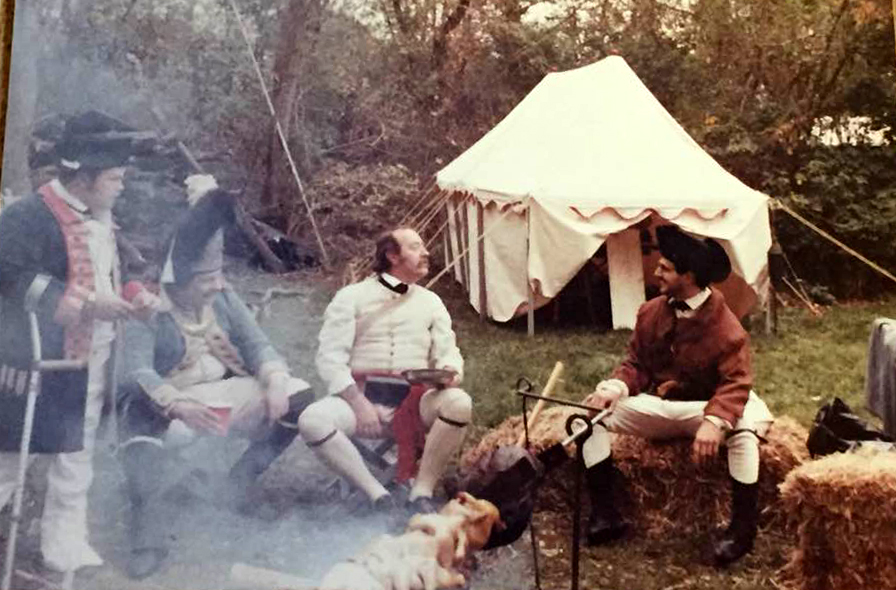
Remsen Memorial Encampment. Courtesy of Michael Albetta
Sponsored by the American Legion Continental Post 1424 and the Remsen Park Coalition, the May 30, 1979 parade was predicted to be the largest of its kind countrywide, with hundreds of marchers and nearly 5,000 spectators. It culminated with ceremonies in commemoration of veterans at Remsen Cemetery, including Revolutionary War Colonel Jeromus Remsen.
The 1980 Forest Hills Memorial Day Festival marked an expansion to a two-day event. On May 25, over 200 Colonial troops participated in the “Colonel Remsen Memorial Encampment,” held at Greenfield Park bordering Union Turnpike. Attendees acquired a taste of Colonial life, complete with the era’s crafts. The next day, over 2,000 marchers proceeded along Metropolitan Avenue from the turnpike, which was the parade’s former starting point.


